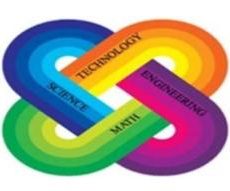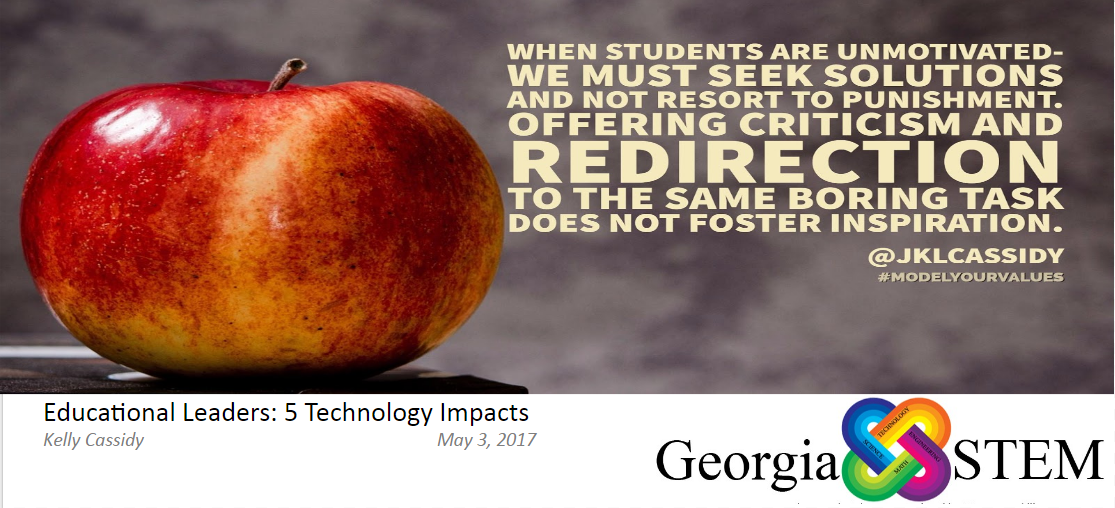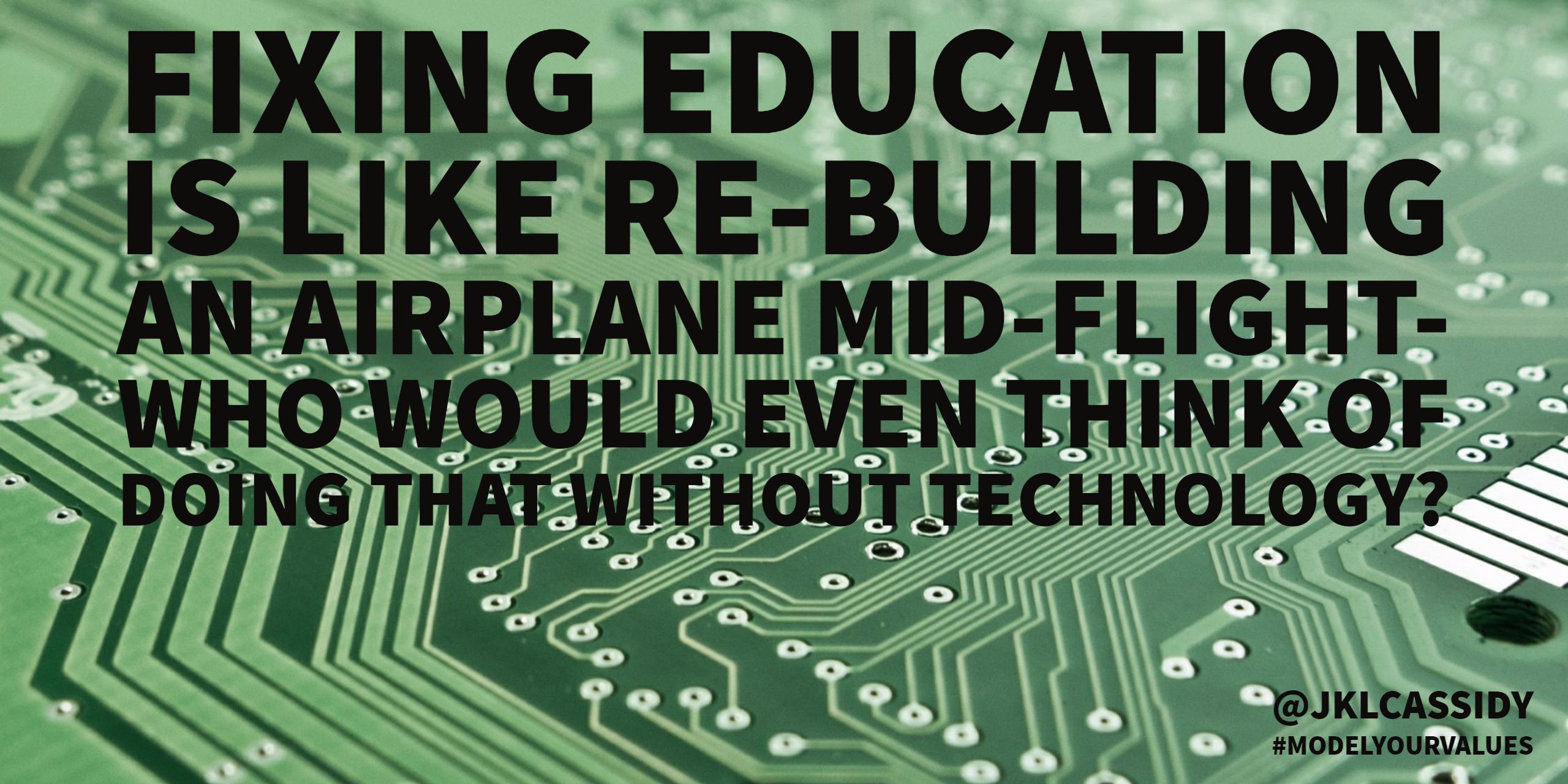Educational Leaders must consider the impact technology is having on our schools as they continue to make staffing decisions, plan curriculum and develop school culture. What worked in schools a decade ago is just not working anymore. Here are 5 ways that Technology is impacting education.
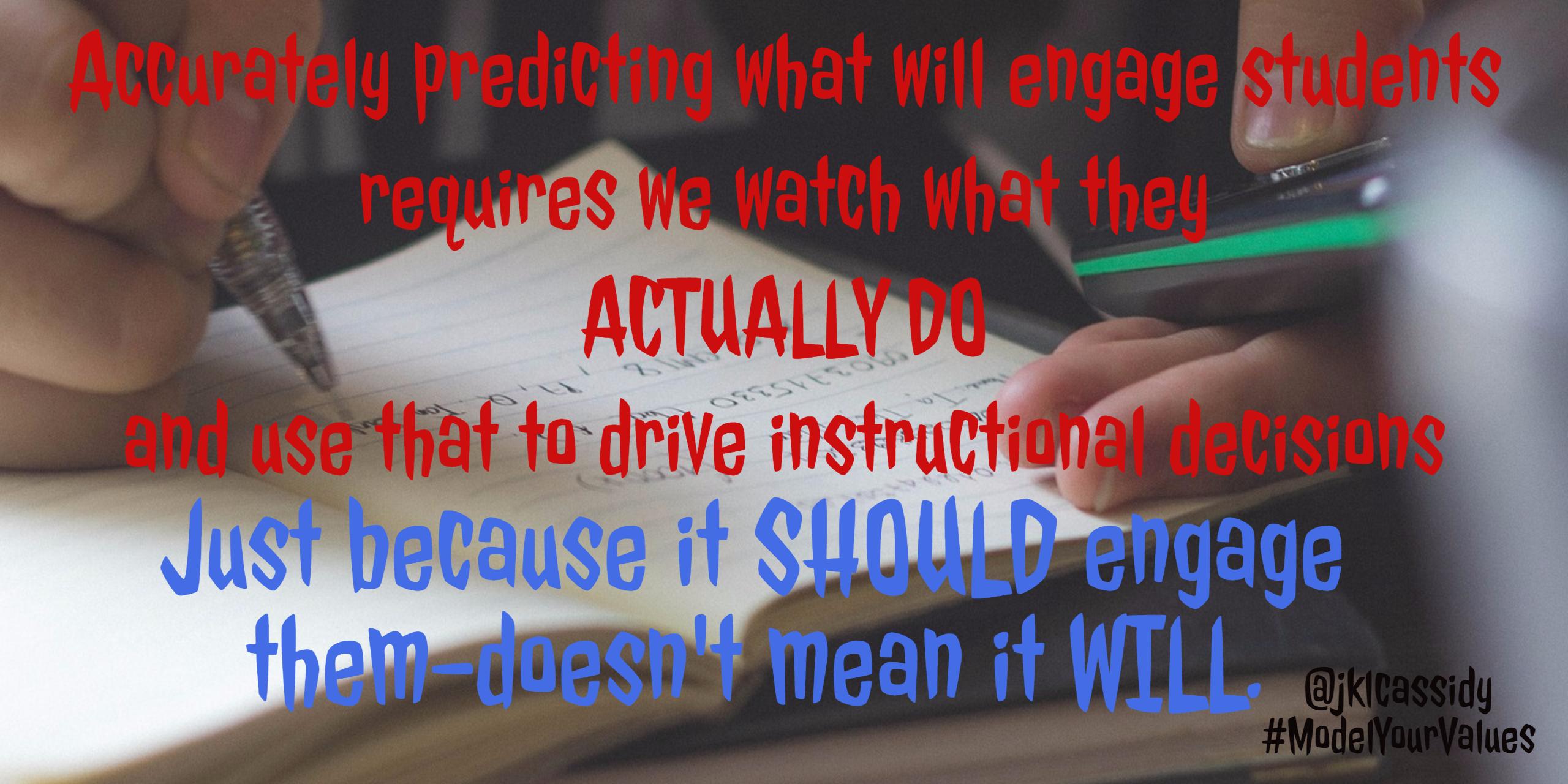
We are competing with technology for student’s attention.
The “Sage on the Stage” model is no longer valid when nobody is paying attention to the Sage. Sometimes students are not as engaged in an activity as we imagined when we planned. Accurately predicting what will engage students requires we watch what they ACTUALLY DO and use that to drive instructional decisions. Just because they SHOULD engage- doesn’t mean they WILL.
To illustrate- I will put forth 2 examples from actual classrooms this school year. Try and guess which one had the better learning outcomes….
- Knowing how much kids enjoy videos, the instructor decided to locate a video depicting lab safety. The students watched the video called “Zombie Lab Safety” which was a parody on the Walking Dead to learn the rules of lab safety and then matched the safety symbols to their meaning on a worksheet designed to act as a study guide.
- The instructor has the idea to use sidewalk paint to teach about chemical reactions. The kids are allowed to mix up their own concoction of “sidewalk paint” after getting their idea approved and paint a design on the sidewalk on a Friday before the football game. The students take pictures of their designs and post them to the class Instagram account. Then on Monday, they re-take the images to see which paint and chemical reaction worked better. Then the kids discuss why that recipe was the best and made predictions about the chemical bonding.
So which one do you think was more engaging for students? Which one had them thinking about their learning outside of class? Which one had them discussing their learning with peers, other teachers, and even their parents?
No- to be fair- neither of these activities is bad. In fact, both are valid in their own ways.
In this case, the results were that the kids were much more engaged in the sidewalk painting than the Zombie video. Both of the activities built upon their interests, so why did the sidewalk activity lead to deeper learning?
There were probably a myraid of factors but the biggest difference in these activities is that in one- kids were receivers and in the other- they were creators. Both of the activities used some form of technology and both were designed to be engaging; however, the power of the creative element cannot be ignored.
As leaders, we must support teachers as they take these instructional risks and foster a growth mindset. Otherwise, we end up with lessons that stagnate and become too safe. Kids are disengaged because teachers are timid about venturing out into the instructional wilderness.
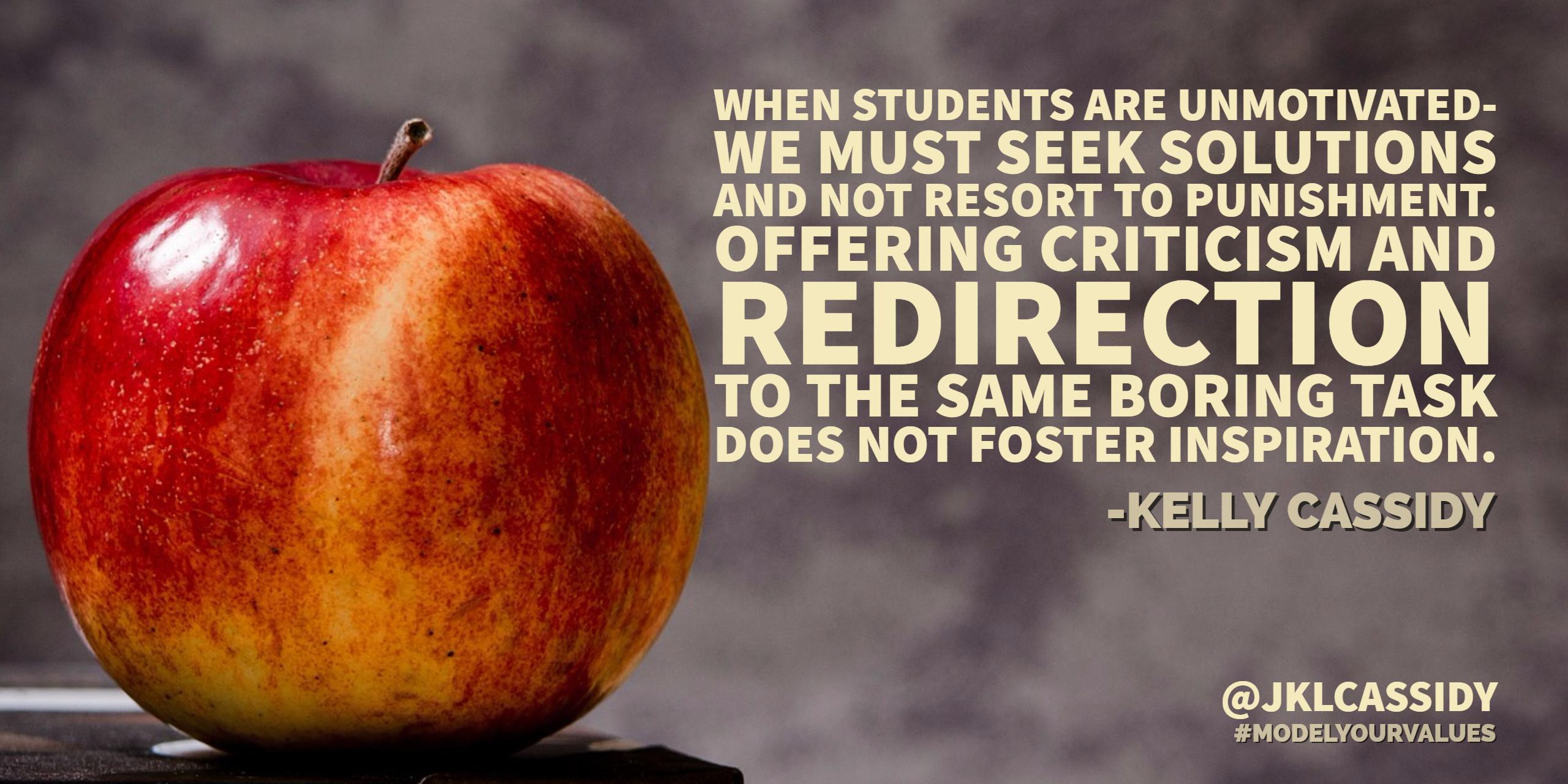
A good way to become miserable as a teacher is to put yourself in a position to have to force students to do their work. Worse yet, calling in an administrator or help from a parent to force a student to do their work. Educational leaders want to support all stakeholders of education but being an instructional mentor and a disciplinarian is a difficult diametric task.
With these resistant students, the more important question is,
“Why won’t the student do the work in the first place?”
This is where functional behavior assessment is vital. When students are unmotivated- we must seek solutions and not resort to punishment. Offering criticism and redirection to the same task that they already found boring does not foster inspiration. There is a fine line here between supporting teachers and enforcing the school’s expectations and fostering an engaging learning environment.
A good question to ask yourself is this:
What is the one thing I hate most in the world?
Now- what if I was forced to do that 8 hours a day?
This is the position that some of our students are in. We may not understand it because generally individuals who devote themselves to education like school; however, we do have to try to empathize if we are going to serve these students a product that they can tolerate.
A lot of this comes down to pride and power. Teachers want all of their assignments to be great and they want to have authority in the classroom. The best classroom teachers have figured out that the classroom runs better when you distribute the pride and power to the students.
We want students to take PRIDE in their work
and to feel they have POWER over their learning.
When that happens, inspiration takes over and punishment is unnecessary.
Have you ever oversalted mashed potatoes? Stay with me for a minute. If you have ever over salted mashed potatoes, you probably know that adding more salt is not the answer. Yet- this is what we do to kids. If they are bad at math and struggle- let’s give them more math. If they are struggling with focusing and sitting still, let’s take away recess. See how counter-productive this is?
We must realize that fixing education is like rebuilding an airplane mid-flight. Just adding more of something or taking away something else is not going to fix the problem. The solution lies in restructuring and rethinking the tools we already have in place.
For example- if you have a class that is unmotivated but they love Polemon Go- restructure a lesson to be more like their favorite game. Maybe they have to work the math problems and then search the playground to “catch” all the right answers that you have hidden there. Want to amp it up using technology- grab the iPads and embed those answers into objects using Augmented Reality apps like Layar or Wallame. The kids have to solve the math to catch the answer to complete their quest. It’s like a puzzle- determine what the kid values and use that to get the outcome you want.
You have to focus on rebuilding the system to fit the kids-
not just forcing the kids into the broken system.
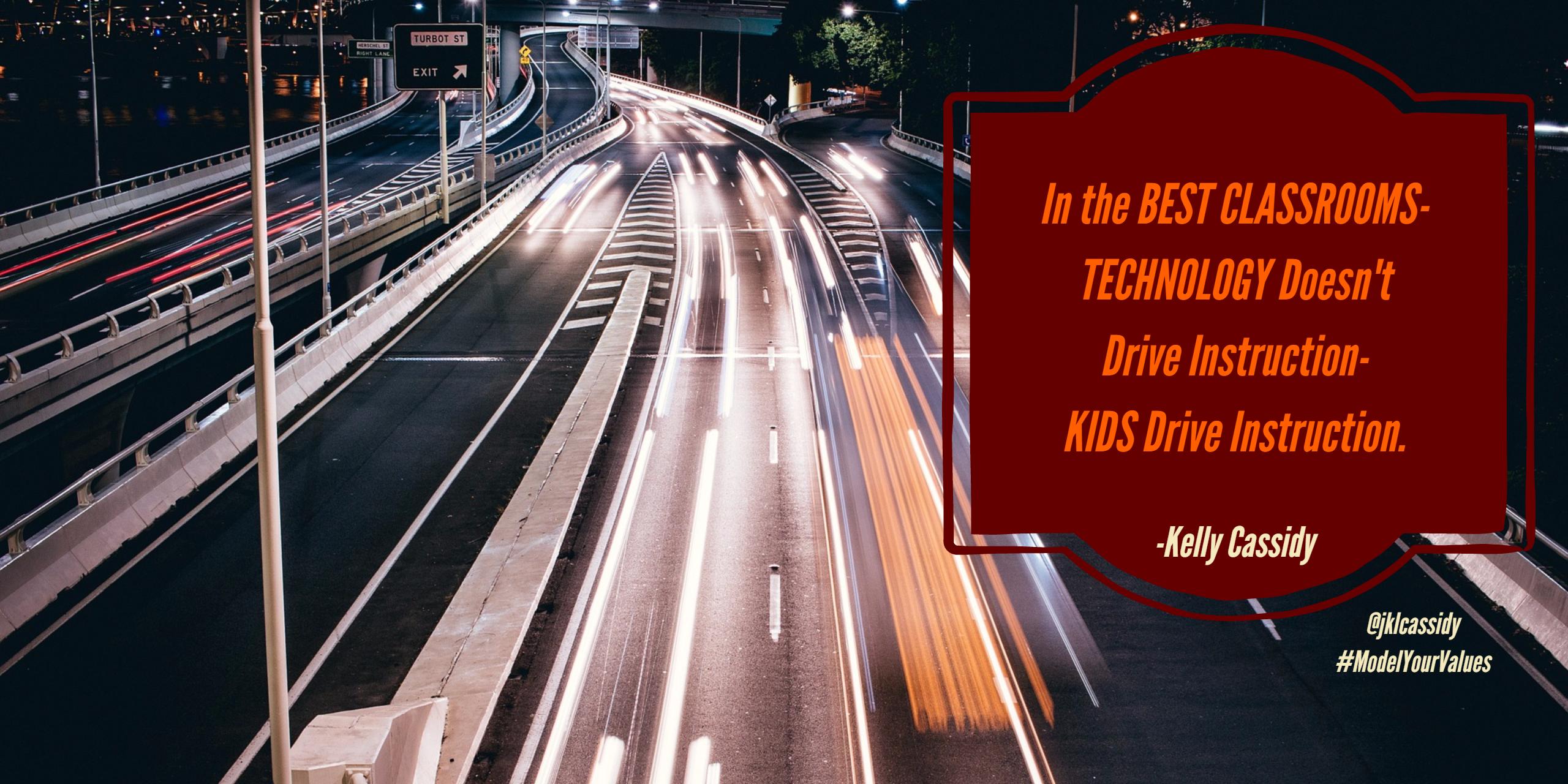
Consider this example from a current high school science teacher:
Recently we were signed up for the computer lab for a simulation and the site we were going to use was down. The server had crashed and it was quickly becoming a lost period. The intention was to collect data and report it using Piktochart. This was intended to serve 2 purposes- to obtain some real world data and to learn a new instructional technology. Quickly- I lost the first objective. The weather and climate data site was down and we were without data. So I turned the wheel over to the kids. My only stipulation was that they had to find data to use in their infographic and they had to cite the source; however, it could be about any topic that interested them. As you can imagine- the engagement was insane. Kids were asking if they could work on them at home to have more time and picking topics that I would never have selected. Although- only one of the lesson objectives was reached (they all learned how to use piktochart), they still talk about that activity as one of their favorites.
Don’t be afraid to ask the students about what they want to learn and let them drive the instruction. Sometimes the road they take still gets you to the learning outcome but it is much more exciting and engaging than the one you would have planned alone. As an educational leader- which is more important, control or engagement? You must decide.
You must decide.
If you want kids to be engaged, you have to relinquish some of the control. This can be difficult. In order for new teachers to do this effectively, they need to see it modeled. They also need to know that Educational leaders are not walking into their classrooms expecting to see quiet, seated students taking notes. Teachers have to feel safe taking chances and be able to #failup.
Engagement on a high level is infectious and addictive.
Once teachers and students experience it- They will crave it daily.
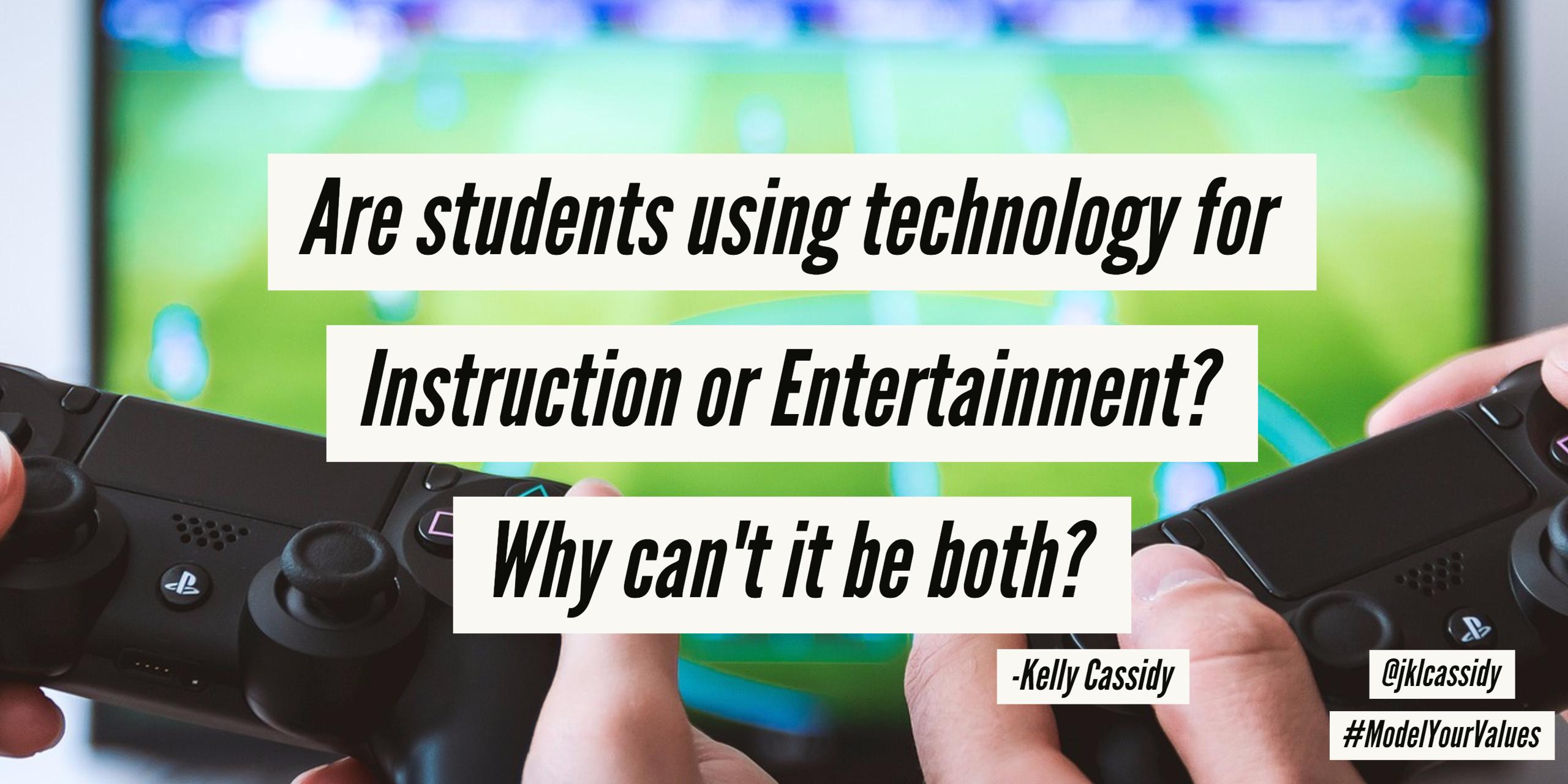
Phones are everywhere. Depending upon the type of BYOT policy at your school or the level of penetration of student devices into the school, the type of effects may be different. Gamification of education is an important trend to watch. Brain Hacking is fascinating and as educators we cannot ignore the investment and engagement that our students have with technology. We have to ask why students are spending hours with a new game or application? What function or gratification is the student obtaining from that action? How can we capitialize on that and redirect it toward learning?
What do you think is the biggest impact of technology? Post your comments below of connect with me on Twitter @jklcassidy Thanks for reading!

